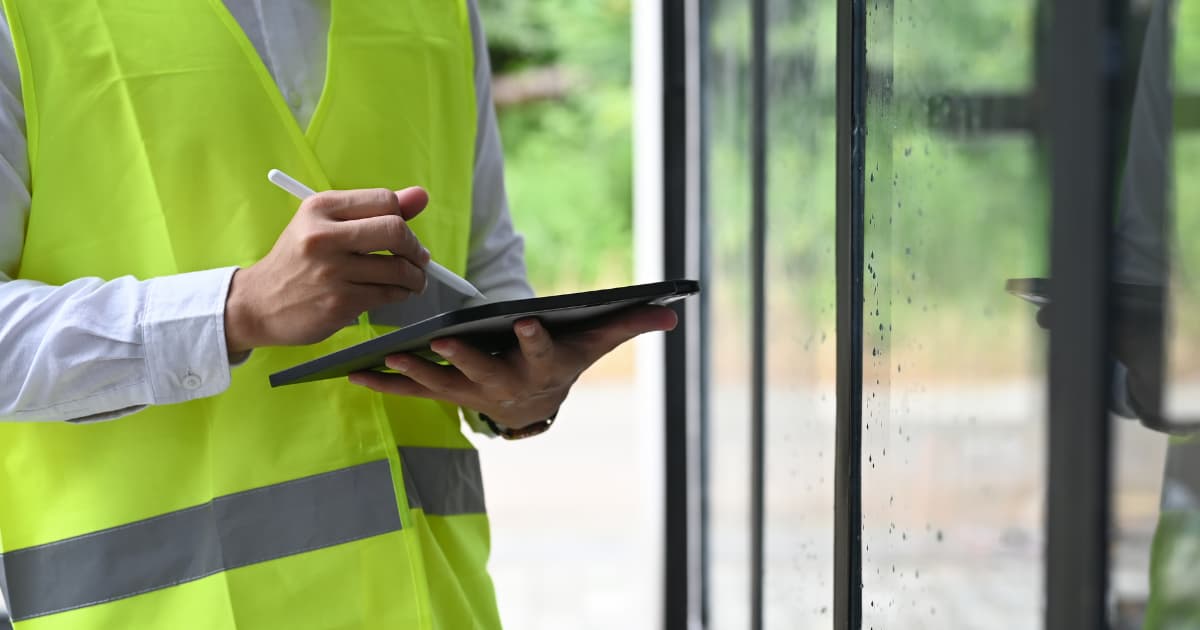
Buying a property of any kind is usually a significant investment, with hoops to jump through prior to exchange of contracts.
One particular hoop that is wise not to overlook is the home survey, which isn’t mandatory but does come highly recommended so you can be alerted to any potential problems before you sign on the dotted line.
These surveys give you, the buyer, an expert overview of the condition of the home you’re interested in, providing you with a detailed report highlighting any issues to give you as much information as possible about the property before you buy.
The survey itself involves an in-person visual inspection by a professional, after which you’ll be provided with a detailed written report.
You can choose any surveyor you like to carry out such work, but it can be beneficial to opt for a RICS building survey, carried out by a chartered surveyor.
This means that they’ll be working in line with the RICS Home Survey Standard, which serves as a best practice benchmark for enforcing the highest of standards in the residential sector.
The Different Types of Home Survey
There are three different levels of survey you can consider, depending on the size of your prospect, as well as its age, condition, originality and complexity.
Here at Cavendish Surveying, we only carry out the most detailed type of home survey falling into the category of Level 3.
Below we provide you with further information so you can make an informed decision as to how to proceed.
Level 1
The Level 1 Home Survey is the lowest priced of the three and is most appropriate for new-build properties and more conventional dwellings, looking into the overall condition of the home and identifying any potential risks or legal concerns. Defects are made note of but advice is not typically provided as to how to deal with these.
Level 2
The Level 2 survey is appropriate for conventional homes in a reasonable condition and with a simple layout (without significant alterations, for example). You will receive more detailed information about the dwelling and advice on any necessary maintenance or repair work. You can also opt to have a Level 2 survey with a market valuation alongside.
Level 3
The most comprehensive of them all is the Level 3 survey, which will provide you with an in-depth analysis of the dwelling, as well as advice relating to repairs, defects and maintenance. The Level 3 survey is typically referred to as either a building survey, or a structural survey.
This is a good choice if you’re interested in buying an older, run-down or larger property, if you have major renovation works in mind, or if the building itself is unusual in some way.
If the house in question is larger than average, built before 1850, of a complex or unique design, in poor condition or featuring non-traditional construction methods, or if it’s been significantly extended or altered since it was built, a Level 3 survey would be appropriate.
The surveyor must complete a detailed inspection of the property and produce a detailed technical report on the building’s construction and condition, to include an outline of any necessary repairs and the potential consequences if these repairs are not carried out.
What Does A Surveyor Do?
Your surveyor must carry out a detailed review of both the exterior and interior of the property you’re interested in buying. The surveying duration on site for a three-bedroom property should typically take around four hours.
Externally, your surveyor must carefully examine the property from ground level up, including roof coverings, chimney stacks, gutters and pipes, main walls, outside doors and windows, porches and conservatories, giving each building feature its own condition rating.
Survey inspection of these elements may involve using specialist equipment such as a camera pole enabling evaluation of high level areas. The condition of the grounds will also be assessed, including fencing, boundary walls, decking, footpaths, permanent outbuildings and any shared areas.
Internally, your surveyor must inspect the roof space and structure, subject to there being safe access. The type and thickness of roof insulation should also be considered, including any accessible ceiling construction beneath.
A visual inspection of the services will be carried out, including gas/oil, electricity, water, drainage and heating, although specialist testing will not be performed as part of the Level 3 survey.
There can be circumstances where further investigation is recommended before proceeding with the purchase such investigation may reveal the need for substantial expenditure. If you are aware of these costs prior to your commitment to purchase, then you will have the opportunity to renegotiate the purchase price.
If you need any further help or advice relating to home surveys, please do not hesitate to get in touch with Cavendish Surveying.today